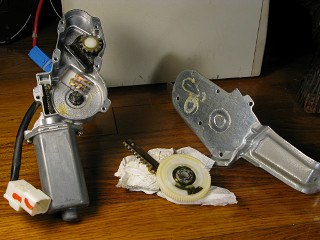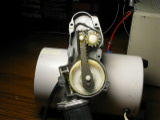
A set of spring contacts bears onto some brass slip-ring tracks embedded into the plastic gear face. The upper two contacts were observed to sit farther into the housing than the lowest one, somewhat visible here, and as found were discolored and much less springy than the lower one. A slight re-bending outward seems to hit their elastic limit much sooner than expected; they're really soft. It is possible that high currents made these two wipers really hot at some point, losing their original metallurgical qualities.
